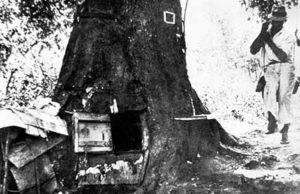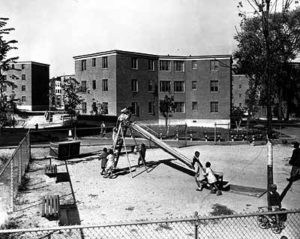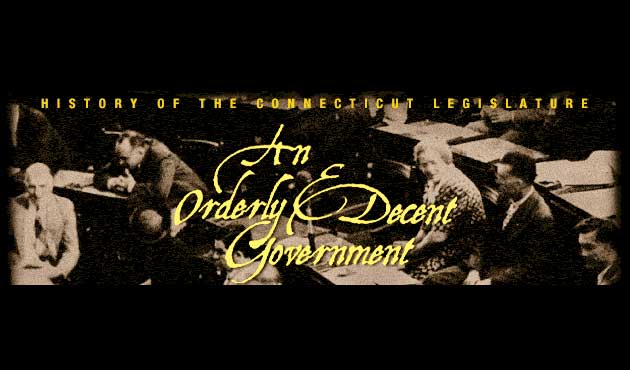The stock market crash of 1929 and the resulting Great Depression soon made the prosperity and optimism of the 1920s distant memories. With a long tradition of limited government, pay-as-you-go financing, and an unshakable faith in the marketplace, Connecticut’s leadership chose to wait the situation out. But by 1930, the severity of the crisis was all too clear, and Connecticut voters opted for new leadership, electing Democrat Wilbur Cross as governor.

State resources were soon overwhelmed by the sheer numbers of the destitute
The bitter experience of the Depression challenged many deep-seated political beliefs in Connecticut. Legislators of both parties had long relied on voluntary charities, local governments, and individual generosity to aid the needy, but these resources were soon overwhelmed by the sheer numbers of the destitute. In past crises the state had maintained a stern independence from the federal government, but even firm “states rights” advocates soon saw that Connecticut had no choice but to seek federal assistance and accept federal controls.
An enormous revolution in political values occurred in the Depression decade. Connecticut’s days of resolute self-reliance, limited government, and one-party rule were gone forever.
World War II brought a cascade of war orders into Connecticut and ended the Great Depression. Women found their lives transformed by the opportunities of the assembly line, while thousands of African Americans migrated to Connecticut in search of work. Almost 210,000 men and women entered the armed forces during the war. Almost 6,000 lost their lives.

Suburbs reshaped Connecticut life in the post-war years
In the post-war years the suburb reshaped Connecticut’s cultural and political life. Thousands of young families left crowded urban centers in search of better housing and better schools. The General Assembly was besieged with requests for additional support for schools, highways, and services. As the suburbs swelled, Connecticut’s cities faltered. Caught in a vicious squeeze between collapsing tax bases and escalating demands for social services, the cities entered a period of extraordinary decline.
Politics in the post-war years blended the social responsibility of the 1930s with the state’s long tradition of fiscal conservatism. In great measure, the story of Connecticut politics in the 1950s and 1960s was the story of John Moran Bailey, chairman of the state Democratic Party. Like J. Henry Roraback before him, Bailey dominated the legislative process without ever holding office.
This article is a panel reproduction from An Orderly and Decent Government, an exhibition on the history of representative government in Connecticut developed by Connecticut Humanities and put on display in the Capitol concourse of the Legislative Office Building, Hartford, Connecticut.
<< Previous – Home – Next >>









